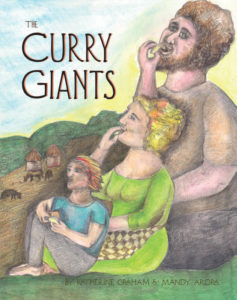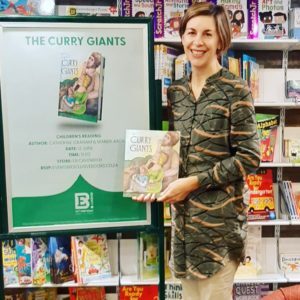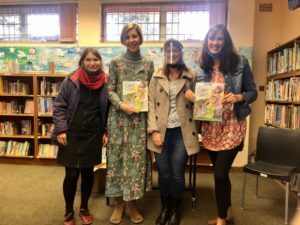Katherine Graham's Blog
October 3, 2024
The compelling case for investing in Disney
 Video streaming in South Africa is booming as customers look for more affordable entertainment options than pay-channel DSTV. Projected revenue in video streaming locally is expected to reach R4,6 billion this year, representing a growth rate of over 8%. Further projections show the user penetration rate, the percentage of the SA population using streaming services like Netflix, ShowMax, Amazon Prime and Disney+, to increase from 13% today to 15% by 2027.
Video streaming in South Africa is booming as customers look for more affordable entertainment options than pay-channel DSTV. Projected revenue in video streaming locally is expected to reach R4,6 billion this year, representing a growth rate of over 8%. Further projections show the user penetration rate, the percentage of the SA population using streaming services like Netflix, ShowMax, Amazon Prime and Disney+, to increase from 13% today to 15% by 2027.
In the face of this rapidly evolving media and entertainment industry, many traditional content houses are struggling to survive. We believe that with its rich history spanning over 100 years, the company started by two brothers, Walt and Roy Disney, immortalised by the cartoon character Mickey Mouse, has a good chance of performing well as a share in the future.
At its core, Disney has not changed, but the environment in which it operates has evolved significantly – and we are certain this will continue to be the case. From its origins in 1923, Disney has had to navigate large technological advances, including the introduction of sound, then colour, in film, a move to computer-generated animation, and now a platform and distribution change from linear film and television to streaming.
Disney today
There are currently three main operating segments at Disney, with the first two closely tied to the content engine. Firstly, entertainment is at the heart of Disney and remains the most popular side of the business. It includes the loss-making, but fast-growing direct-to-consumer (DTC) business (Disney+ and Hulu), the highly profitable but declining linear business (channels and networks) and the content sales and licensing business, which distributes content to third parties, including cinemas.
Secondly, there’s the experiences part of the business, which includes the theme parks situated around the world and the licensing and sales of consumer products. With the current losses in streaming, parks and experiences make up 54% of group operating profit, recovering well post-COVID.
Finally, there’s the sports segment of Disney’s business, which comprises ESPN and ESPN+ streaming. It doesn’t benefit as much from the full content engine, but is a useful tool for streaming differentiation and bundling linear channels.
Why the investment case?
Amidst all the disruption caused video streaming largely displacing TV channels as a means of providing popular entertainment, it is not yet clear what the industry structure will ultimately look like, but we believe Disney has a reasonable prospect of success. When it launched in 2019, Disney+ garnered 10 million subscribers worldwide on its first day, evidence of the significant intellectual capital the company possesses. It has a valuable treasure trove of content creation, content library and distribution.
Disney’s linear entertainment assets (channels and networks), while in decline, are still very profitable, generating free cash flow and adjusting to a declining customer base. The company is open to divesting these assets at some point.
Core to the investment case for Disney is its superior content and franchise creation. We believe Disney has taken the correct strategic direction by focusing more on product quality than quantity. This has not been the case over recent years. In addition, after a recent lean patch at the box office, Disney announced an “entertainment-first mentality”. Disney CEO Bob Iger has openly spoken about a changed focus from messaging to entertaining. The business has been reorganised to restore authority and accountability across the content cycle to the creation teams, after these had been separated a few years ago.
The potential upside can be seen from the numbers: Disney had six of the top 10 streamed movies across all platforms in the US in 2023, and the studio business was number one at the global box office in seven of the last eight years. The movie pipeline for the next few years looks solid, with titles such as Deadpool & Wolverine, Inside Out 2, Avatar 3 and a standalone Mandalorian film.
On the negative side is Disney’s streaming business, which lost US$2.6bn in the 2023 financial year. However, there are signs that the financial performance has passed an inflection point as operating losses improved by $986 million when compared to 2022 and even faster in the first quarter this year. Disney now aims to hit profitability by the end of the 2024 financial year.
In terms of sports, ESPN is probably the strongest sports brand in the US. We believe Disney can successfully manage the process of launching ESPN Flagship, a DTC streaming service, in 2025, despite the headwinds facing linear sports broadcasting.
Lastly, the experiences business continues to be the primary monetisation avenue for Disney’s intellectual property. It has produced strong returns over time and continues to underpin the value of the group. Disney’s confidence in the business was highlighted by its intention to inject $60 billion over the next 10 years into its parks, resorts and cruises.
Based on the reasons outlined above, we believe Disney is looking promising as a stock to invest in, given that its share price doesn’t reflect the underlying value of its key parts. The company’s management will need to focus on creating shareholder value in the years to come. More important in the near term will be for Disney to make the right decision when choosing the next CEO, as Iger’s contract expires in 2026.
The balance sheet is currently in a reasonable position, so much so that a dividend was recently announced, as well as a $3 billion share buyback. While Disney has performed strongly off its lows, it still trades below its intrinsic value with additional upside optionality.
The post The compelling case for investing in Disney first appeared on Word Count.
What is the minimum cover a medical practitioner should choose?
 In 2020, CapeTalk interviewed SA Society of Obstetricians and Gynaecologists council member Dr Johannes van Waart on how many highly trained and experienced obstetricians and gynaecologists were emigrating as a result of the astronomical rise in insurance premiums.
In 2020, CapeTalk interviewed SA Society of Obstetricians and Gynaecologists council member Dr Johannes van Waart on how many highly trained and experienced obstetricians and gynaecologists were emigrating as a result of the astronomical rise in insurance premiums.
To put things into context, an anonymous obstetrician from Tamboerskloof, Cape Town, called in to say: “A few years ago, our insurance premiums were a few thousand rands per month. Now, they are at least R1.3 million per annum. This means your first 10 deliveries of the month are just paying towards medmal insurance.”
Topical, controversial, real… But the first thing a medical specialist in a high-risk category seeking professional indemnity needs to understand is the difference between an occurrence-based and a claims-made insurance policy, what gaps may transpire when changing from one to the other, and whether the indemnity cover they have in place matches their risk profile.
Occurrence-based versus claims-made – how not to be caught out
Both policy types, if structured correctly, will cover a medical specialist for their medical malpractice needs. However, there are slight differences. With an ocurrence-based policy, your medical insurer will cover your medmal claim at the time the procedure or occurrence took place.
With a claims-made policy, on the other hand, your insurer is liable for the claim regardless of when it is made. This is particularly important when changing from one insurer to another – i.e. when identifying who received the premium in the year when the occurrence took place or the claim was made against you.
The claims-made approach is considered more modern and cost-effective, so it tends to be the more popular of the two options. Taking out this sort of policy also means that you can move across from an occurrence-based policy, without any significant coverage gaps being created.
However, it is worth noting that on retirement, an occurrence-based policy will continue to cover the procedures you performed during the policy period. On the other hand, a medical practitioner on a claims-made policy will require some kind of run-off cover once their policy has been cancelled or they retire.
Be sure to ask your broker about the possibility of an extended reporting period (ERP), which will set you up to continue covering negligence claims, even after you have ceased to practise.
On the money – fees should be risk-dependent
Sure, a medical practitioner can check whether they are being over- or under-insured by using the online “quote” offerings of a number of different providers. But what they’ll essentially want to have in their corner when a medical malpractice claim is laid against them is an insurer who offers the best possible legal assistance and has assessed their unique risk profile astutely at the outset, so that the cover in place is completely adequate.
It is therefore worth seeking out and choosing a product, and indeed a brokerage, that has years of experience behind them, so that affordability and risk are always perfectly balanced.
Medmal insurance is a complicated game. You’ll need to go with your gut, but also use your savvy in terms of ensuring sufficient cover is in place, without it seeming astronomical for the type of medicine you practise – or the skills you are confident in providing on the surgical table.
The post What is the minimum cover a medical practitioner should choose? first appeared on Word Count.
What trends are shaping the future world of work?
 The biggest lesson COVID-19 taught employers and employees alike is that work-life integration is possible. Being forced to work remotely from home thanks to the internet allowed many employees more time to do the things they enjoyed instead of battling traffic every day. “The realisation that remote work is possible has by far been the best positive outcome of the pandemic,” asserts Palesa Ntoagae, Old Mutual Insure Human Capital Executive.
The biggest lesson COVID-19 taught employers and employees alike is that work-life integration is possible. Being forced to work remotely from home thanks to the internet allowed many employees more time to do the things they enjoyed instead of battling traffic every day. “The realisation that remote work is possible has by far been the best positive outcome of the pandemic,” asserts Palesa Ntoagae, Old Mutual Insure Human Capital Executive.
She says remote work has accelerated digital transformation which assists in driving efficiency. “It’s improved the size of the talent pool that’s available, locally and globally, and it’s highlighted the importance of mental health.” In response, more companies are prioritising their staff’s wellbeing and putting the right support mechanisms in place.
Time to go back to the office?
Despite these benefits, there’s a feeling among many organisations that productivity has dropped due to remote-working arrangements and that it’s better for employees to return back to the office. “A building without people is exactly that, a building,” comments Ntoagae. “But the culture and informal ways of work are experienced when there are people in it.”
 She believes it’s imperative for new recruits to experience the culture of a company and for leaders to set the tone in driving the right behaviours. “You can’t do this via a computer screen,” she says. “So much learning happens in the unscheduled moments – the so-called water-cooler conversations.”
She believes it’s imperative for new recruits to experience the culture of a company and for leaders to set the tone in driving the right behaviours. “You can’t do this via a computer screen,” she says. “So much learning happens in the unscheduled moments – the so-called water-cooler conversations.”
Ntoagae maintains that by having employees together in the office, organisational problems are resolved faster and junior employees are trained quicker. “We need to bring back some of the practices that allowed people to connect and co-create solutions to complex problems – and you won’t be able to do that effectively through an MS Teams meeting.”
Enhancing the value proposition for employees
At the same time, employers need to be cognisant that in order to retain talent, their value proposition needs to be compelling. “Before the pandemic, the focus on building employee value proposition was typically presented as monetary benefits,” she explains. “The non-monetary aspects, such as mental health or employee well-being, were considered fluffy or soft.”
However, Ntoagae believes that these soft aspects of organisations’ value proposition have now become hard measures. “They are the new superior benefits that really matter. The way companies responded to the well-being of their employees during the pandemic highlighted the great employers from those who weren’t.”
Adapt or lose relevance
But she points out that there’s no one-size-fits-all approach to hybrid working and keeping employees happy. “The ideal way of working is not homogenous,” she states. “Companies must embark on practices that work for them as a business and for employees. A consultative approach is required because talent has access to global employers.”
Moreover, employees will need to stay nimble to keep pace with changing technology. According to a 2023 report by the Global Institute, one in 16 workers in eight major economies, including China, the US and Germany, will need to switch occupations by 2030. This amounts to 100 million workers worldwide, mainly those with middle to low skills. “The rise of automation and artificial intelligence could contribute to significant job losses unless the rate of reskilling can keep up with the evolving nature of work,” comments Ntoagae.
Nevertheless, she remains optimistic about the future. “These are exciting times for the human capital fraternity to rise up and lead alongside business leaders. I think it’s important to remain flexible,” she concludes. “Today’s youth have very different ideals about where and how work should take place. We must stay open-minded.”
The post What trends are shaping the future world of work? first appeared on Word Count.
February 20, 2024
Is ChatGPT after my job?

Picture: Pexels
For weeks, this was all we spoke about. I remember a rather heated discussion outside our gym class about whether the bots were after our jobs. One of our clients had opted to begin writing their financial and tax-related articles by making use of ChatGPT, which they claimed would save them between R3,50 to R5 per word on writer’s fees.
In the end, we decided we couldn’t ignore the threat that ChatGPT and other LLMs, such as Microsoft Copilot, pose. We probably would be losing out on commissions from clients for short, generic articles. Why pay a writer when ChatGPT can tell you what the five causes of acne are?
But we did agree that there might be a new source of revenue for us, too. Although ChatGPT may work nicely for such clients on a limited basis, it was always going to be a good ideal for them to ensure that their AI-generated articles were edited (for grammatical errors, such as US spellings) and fact-checked (for professional accuracy) before they published them. In most cases, the length of articles is a problem. Longer, more nuanced pieces require a seasoned writer to put them together.

Picture: Pexels
Further, while ChatGPT and similar platforms may be able to help you with a bereavement card when you’re at a loss for words (i.e. “I am deeply sorry for your loss and I know how difficult it can be to cope with the death of a loved one… Please know that I’m here for you…), there are other instances where it comes up short. Can you imagine AI taking the place of a political journalist reporting from a war zone? Hardly. Or giving a commentary of how the ANC has fared governing our country for the past 30 years? It could, of course, but the result may be a little bland.
Let’s dive down into more limitations of ChatGPT:
• Both grammar and facts should be checked by a human brain, according to your region (UK/US) and to ensure your copy is professionally accurate.
• Human beings can reach great heights of creativity, depending on their skills, thinking abilities and what they have experienced in life. Such levels of uniqueness and originality cannot be expected from an AI tool.
• Language and emotion are tightly bound together across most cultures and belief systems. So, while ChatGPT and the like may be able to aid an unskilled writer’s levels of expression, someone with a bit more linguistic clout may find its rumblings rather shallow and unexpressive.
For those in content-creation and marketing jobs who are bravely making use of ChatGPT to automate a few of the more mundane aspects of their work, you’re on the right path! Fresh ideas and perspectives? Tick. Data and research collection? That’s the ticket. Creation of an initial draft, that you then edit and add to yourself? Perfection.
Vanessa Rogers is the owner and founder of TextBOX Conceptual, a boutique copywriting and PR agency based in Cape Town.
The post Is ChatGPT after my job? first appeared on Word Count.
February 28, 2023
Hello, darkness, my old friend
 There’s a great word in Afrikaans (admittedly, a bit rude) that sums up how a lot of South Africans are feeling at the moment with all the rolling blackouts thanks to our failing energy utility, Eskom. “Gatvol” – fed up. I think the novelty of candles and playing cards at night has worn out. Much as we greeted the thought of the first Covid lockdown with optimistic expectations that it would bond our family together and help us to focus on all that is good and wholesome, including family cookouts and happy homeschooling moments, after two weeks of being locked together in the same house, we started to fall apart spectacularly, one messy meltdown after another (except for my saint-like husband).
There’s a great word in Afrikaans (admittedly, a bit rude) that sums up how a lot of South Africans are feeling at the moment with all the rolling blackouts thanks to our failing energy utility, Eskom. “Gatvol” – fed up. I think the novelty of candles and playing cards at night has worn out. Much as we greeted the thought of the first Covid lockdown with optimistic expectations that it would bond our family together and help us to focus on all that is good and wholesome, including family cookouts and happy homeschooling moments, after two weeks of being locked together in the same house, we started to fall apart spectacularly, one messy meltdown after another (except for my saint-like husband).
That is sort of where I am right now. After six months of loadshedding, I’m gatvol. I think when we first started with intermittent power, there was a kind of “vasbyt” attitude (another great Afrikaans expression, meaning to grin and bear it) that things would get better if everyone just did their bit. But now the realisation has slowly dawned on us that this spectre of darkness is not going to leave us anytime soon. In fact, it’s here to stay.
 When Andre de Ruyter resigned as CEO of Eskom, that was exactly how I felt – resigned to my fate. I am now living in a failing state whose government can no longer be trusted. And that grieves me. For someone who loves this country and whose family on both sides has lived in it for generations, I wanted to believe that there could be a better life for all when the ANC took power in 1994. I remember covering the joyous budget speeches of former Finance Minister Trevor Manuel when he announced a budget surplus and the pride that I took in living in a country whose transition to democracy was nothing short of miraculous. Now I feel betrayed that those bright hopes of the Mandela and Tutu era have not been realised. South Africa deserves better than the last two presidents we have endured.
When Andre de Ruyter resigned as CEO of Eskom, that was exactly how I felt – resigned to my fate. I am now living in a failing state whose government can no longer be trusted. And that grieves me. For someone who loves this country and whose family on both sides has lived in it for generations, I wanted to believe that there could be a better life for all when the ANC took power in 1994. I remember covering the joyous budget speeches of former Finance Minister Trevor Manuel when he announced a budget surplus and the pride that I took in living in a country whose transition to democracy was nothing short of miraculous. Now I feel betrayed that those bright hopes of the Mandela and Tutu era have not been realised. South Africa deserves better than the last two presidents we have endured.
 When the power goes out for four hours in a row and then returns (my laptop battery having amazingly endured), only to trip out again for another hour, it’s difficult not to entertain dark thoughts. Should we be leaving? Maybe all those friends and family members who emigrated years ago saw the writing on the wall long before we did. Are we being foolish to stay behind?
When the power goes out for four hours in a row and then returns (my laptop battery having amazingly endured), only to trip out again for another hour, it’s difficult not to entertain dark thoughts. Should we be leaving? Maybe all those friends and family members who emigrated years ago saw the writing on the wall long before we did. Are we being foolish to stay behind?
But leaving feels like cowardice – and we all know the grass is not necessarily greener on the other side. My love for this country and the diversity of its people is so strong. Surely that faith is not misplaced? And I do live in the Republic of the Western Cape where things are relatively better than in other parts of South Africa. Then there’s our children’s schooling to think of… And has God really called us to leave? my saint-like husband reminds me. So no, we’ll stay. For now. And hopefully we will become more resilient and better days will come with renewable energy from independent power providers who do not waste taxpayers’ money. We wait, we hope, we pray the lights will come back on again.
The post Hello, darkness, my old friend first appeared on Word Count.
May 4, 2022
Finding my creative flow again
 2021 was a really good year for me – I published two books, my picture book The Curry Giants and my middle-grade sci-fi/fantasy novel Robot Rebellion: The Buried Secret. Both books were a long time coming. I enjoyed ironing out the final details with the printer and the mad scramble before the book launches. And then they came and went with great fun and fanfare and I was left feeling dry, as parched as drought-stricken earth, and it felt like words and creative ideas had deserted me.
2021 was a really good year for me – I published two books, my picture book The Curry Giants and my middle-grade sci-fi/fantasy novel Robot Rebellion: The Buried Secret. Both books were a long time coming. I enjoyed ironing out the final details with the printer and the mad scramble before the book launches. And then they came and went with great fun and fanfare and I was left feeling dry, as parched as drought-stricken earth, and it felt like words and creative ideas had deserted me.
Part of the reason why I felt I couldn’t write was because my soul was exhausted after the effort of bringing forth two books into the world. When you self-publish, all the onus lies with you to get your book out there and be read by as many readers as possible. And that means school visits, relentless marketing, etc. etc. I just didn’t have the energy for it. I was happy to write again, but I didn’t want the slog of what comes after the final full stop at the end of your novel.
Also, I think all my focus was on writing words that were billable, either for media companies or PR agencies. It felt there wasn’t enough creative juice for novels as well. I didn’t have the head space to sit down and plan a novel, either. It all seemed too much for me, even though my readers were eager to have the cliffhanger ending of Robot Rebellion: The Buried Secret finally resolved.
 So I started with poetry. I swam on the beach at Glencairn. Then I wrote a poem. I went for coffee at Little Streams. I wrote a poem. I went to Greyton for a romantic anniversary with my husband. And when I got home, I wrote a poem. Little baby steps that helped me to open up the well inside. To my relief, it was not dry. All those quiet moments in God’s creation certainly helped. Slowly, slowly, I inched my way back to writing again.
So I started with poetry. I swam on the beach at Glencairn. Then I wrote a poem. I went for coffee at Little Streams. I wrote a poem. I went to Greyton for a romantic anniversary with my husband. And when I got home, I wrote a poem. Little baby steps that helped me to open up the well inside. To my relief, it was not dry. All those quiet moments in God’s creation certainly helped. Slowly, slowly, I inched my way back to writing again.
And now, I’m pleased to say, I have begun to plan the next Robot Rebellion novel. Readers will no longer be dangling on the edge of the cliff: I will guide them off it and show them the plot journey that lies ahead. I’m still planning, mind, but there’s an excitement in my spirit and a joy to finally get back into doing something that makes my soul sing.
Rather than berating myself for the last four unproductive months, I’m glad I had a chance to let my creative gifting lie fallow for a while. As fellow writer Olivia Abtahi puts it, “Without the compost of past ideas, new seeds will not grow. Without taking time to explore and step away from our desks and experience what the world has to offer, we will find little to write about. Rest, dear writer. Rest, knowing the words will come, but only if you refill the well from which they must pour.”
January 10, 2022
Voice notes – virtue or vice?
I mean, who has the time to listen to long, rambling voice notes that never really get to the point? A dear friend once sent me a voice note that was 20 minutes long. Really. I listened to the first minute or two and then the last and using a bit of guess work, typed a vague reply that I hoped fitted the tone of her message. It seemed to do the trick.
 I suppose, more accurately, you could say the world is divided into extroverts and introverts. Introverts like me tend to prefer hiding behind the safety of text messages, while extroverts like to let it all hang out and broadcast their thoughts to the world. I suppose in their defence, it is quicker to record a voice note than type one out. What isn’t factored into the equation is the hassle factor of listening to their messages. While text messages are a breeze to skim through, voice notes take longer. And in the case of indistinct messages, they may take a while to decipher. What indeed is the person trying to say? Why can’t the sender just type out a message with their thumbs like the rest of us? What makes them so special that I have to do all the hard work for them?
I suppose, more accurately, you could say the world is divided into extroverts and introverts. Introverts like me tend to prefer hiding behind the safety of text messages, while extroverts like to let it all hang out and broadcast their thoughts to the world. I suppose in their defence, it is quicker to record a voice note than type one out. What isn’t factored into the equation is the hassle factor of listening to their messages. While text messages are a breeze to skim through, voice notes take longer. And in the case of indistinct messages, they may take a while to decipher. What indeed is the person trying to say? Why can’t the sender just type out a message with their thumbs like the rest of us? What makes them so special that I have to do all the hard work for them?
 Okay, okay – I’m ranting, I know. And I can hear what you’re saying. Like most things in life, there is a time and place for voice notes. Like your family singing happy birthday to you – that is pretty special. Or a long-lost friend abroad reaching out by sending you a heart-warming voice note. And of course if you’re stuck in traffic and only have a second or two, hitting the record button to say you’re running late is completely understandable.
Okay, okay – I’m ranting, I know. And I can hear what you’re saying. Like most things in life, there is a time and place for voice notes. Like your family singing happy birthday to you – that is pretty special. Or a long-lost friend abroad reaching out by sending you a heart-warming voice note. And of course if you’re stuck in traffic and only have a second or two, hitting the record button to say you’re running late is completely understandable.
But those situations are few and far between. For most everyday situations, text notes come out tops, which is probably why my cousin at one stage had “No voice notes, please” as her WhatsApp profile. They may be convenient for you, but spare a thought for the rest of us, please.
Epilogue
My husband turns briefly from the steering wheel to look at me. “You… you’re recording a voice note?”
My friend Vikki’s ebullient voice demanded a response that matched it, so I impulsively hit the record button, too. We were going away on holiday, after all.
“And what’s that meant to mean?” He raised his eyebrows quizzically.
“I don’t know,” I shrugged. Which, roughly translated, meant: If you can’t beat ’em, join ’em.
October 6, 2021
Book launches in Covid times
“Oh, your book launches looked so successful!” enthused a writer friend after the publication of my latest children’s picture book, The Curry Giants.*
 “Thanks!” I said. Should I qualify what “successful” meant? Surely it was not the number of books sold. At the first book launch at Exclusive Books Cavendish in June, I sold a grand total of five books. I even made it to the “bestseller” list for kids’ books that week! At the Meadowridge Library two weeks later, the book sales were no less impressive – two. I spotted a father with his two sons before the reading began and tried to coax him and his kids into joining. The look on his face said one thing – fear. South Africa was about to ramp up from Alert Level 3 to 4. It was clearly not the time to get friendly with strangers.
“Thanks!” I said. Should I qualify what “successful” meant? Surely it was not the number of books sold. At the first book launch at Exclusive Books Cavendish in June, I sold a grand total of five books. I even made it to the “bestseller” list for kids’ books that week! At the Meadowridge Library two weeks later, the book sales were no less impressive – two. I spotted a father with his two sons before the reading began and tried to coax him and his kids into joining. The look on his face said one thing – fear. South Africa was about to ramp up from Alert Level 3 to 4. It was clearly not the time to get friendly with strangers.
Later I was pleased to recognise an adoptive mom I knew wandering about the children’s library. Surely she would like to buy a book for one of her sons? They both fell into the right target market for the book. Nope – she shrank away as I handed her the book as if it were contaminated. Perhaps I should have sprayed sanitiser on my hands first? The do’s and don’ts of Covid-era book launches are not always easy to fathom.
Count your blessings
 But it’s not all bad. There were wonderful moments, too. Just having the launch at Exclusive Books has been a long cherished dream of mine. A huge shout out to Linda McCullough and her team! It was so special having family and friends gathered at the cosy children’s corner in Cavendish Square. I will never forget the illustrator Mandy Arora with her entourage of fans: her three burly sons, her sister and her mum. (Her sister did a very good job of stirring the curry potjie pot during the story’s enactment!) And I loved how my dad stole a furtive photo of me in full flight as I read the story out loud to the children. “It was nice to see you in action,” he confessed at the end. Even my mother-in-law cut short her normal Saturday morning walk with friends to pop by and a good church friend bought a copy as a birthday present.
But it’s not all bad. There were wonderful moments, too. Just having the launch at Exclusive Books has been a long cherished dream of mine. A huge shout out to Linda McCullough and her team! It was so special having family and friends gathered at the cosy children’s corner in Cavendish Square. I will never forget the illustrator Mandy Arora with her entourage of fans: her three burly sons, her sister and her mum. (Her sister did a very good job of stirring the curry potjie pot during the story’s enactment!) And I loved how my dad stole a furtive photo of me in full flight as I read the story out loud to the children. “It was nice to see you in action,” he confessed at the end. Even my mother-in-law cut short her normal Saturday morning walk with friends to pop by and a good church friend bought a copy as a birthday present.
Sipping tea on the Titanic
Then of course there was the celebratory tea we had after the Meadowridge Library book launch. Sharon Swanepoel, the amazing children’s librarian there, joined Mandy, fellow illustrator Katinka Joubert, my friend Vikki Draper and me as we sipped tea and ate crumpets. The grip of lockdown may have been tightening, but we were not going to let it bother us – not in the least. Like the musicians on the Titanic, we would play our instruments as the ship went down, which so far, thank heavens, it hasn’t.
 I suppose book launches in the time of Covid aren’t that bad, after all. Not if they mean friends and family braving the virus-infested world to support you. So far, I’ve sold just over 60 books – my first box of books is gone! The subsequent readings I did at Cape Town schools really helped. Just launching a book during a pandemic, I think, is a feat in itself.
I suppose book launches in the time of Covid aren’t that bad, after all. Not if they mean friends and family braving the virus-infested world to support you. So far, I’ve sold just over 60 books – my first box of books is gone! The subsequent readings I did at Cape Town schools really helped. Just launching a book during a pandemic, I think, is a feat in itself.
*The Curry Giants was made possible by the generosity of the National Library Library of South Africa‘s Community Publishing Grant. It tells the story of a family of giants in KwaZulu-Natal whose hunger for curry soon lands them in trouble with the local chief. But it is their love for curry which ends up saving the day when a fire-breathing dragon threatens the entire village. The book sells at R150 and can be ordered directly from the author.
March 5, 2021
Für Elise
Elise was not your average aunt. For one thing, despite her great age, she refused to let you call her “Aunty Elise”. It was just “Elise”. For another, she did not go in for the things you would normally associate with an old relative. No baking rusks or sitting in an armchair sipping tea for her. When I asked her what she wanted for her 80th birthday, she said, “A pair of skinny jeans.” I kid you not. She entertained and fed her guests bowlfuls of pasta. She stayed up late watching European football with her Italian husband Maurizio. She checked emails on her phone and kept up with the latest news.
 Not only in old age did she defy stereotypes. As a young woman, she broke with her conservative Afrikaner upbringing. She left her home town of Calvinia in the Northern Cape to study in Cape Town at a secretarial college. As soon as she’d finished, she went to work at the SA embassy in Paris. In Rome she met Maurizio, a promising architect-artist, and confounded her father’s predictions that she would never marry. She converted to Roman Catholicism, which caused minor shock waves in her family, and married Maurizio at the age of 39.
Not only in old age did she defy stereotypes. As a young woman, she broke with her conservative Afrikaner upbringing. She left her home town of Calvinia in the Northern Cape to study in Cape Town at a secretarial college. As soon as she’d finished, she went to work at the SA embassy in Paris. In Rome she met Maurizio, a promising architect-artist, and confounded her father’s predictions that she would never marry. She converted to Roman Catholicism, which caused minor shock waves in her family, and married Maurizio at the age of 39.
Like her father Boet Wahl, who wandered from dorpie to dorpie with his wife and three daughters in tow, raising and selling sheep, operating a hotel and later a hardware store, Elise was by nature a gypsy. She loved travelling. If she and Maurizio weren’t in their flat in Sea Point, they were in their country home in Greyton. If they weren’t in South Africa, they were in Italy. If they weren’t in Italy, they were travelling abroad – England, Russia, Croatia, Turkey. We envied their holiday destinations. Wanderlust was in her blood.
 She had a unique gift for hospitality. A party of 30 guests for a New Year’s celebration in Greyton didn’t daunt her. She would pour herself a glass of white wine and begin her pot of lentils at around two o’clock in the afternoon. “Maurizio, can you buy me two packets of brown onion soup?” she would ask. “And go get a watermelon and some ice-cream.” Then Maurie would be sent into the village to shop while she stirred the pot of simmering lentils. (Each lentil, so it went, represented one coin in earnings for the new year – the more you ate, the more you were likely to earn.)
She had a unique gift for hospitality. A party of 30 guests for a New Year’s celebration in Greyton didn’t daunt her. She would pour herself a glass of white wine and begin her pot of lentils at around two o’clock in the afternoon. “Maurizio, can you buy me two packets of brown onion soup?” she would ask. “And go get a watermelon and some ice-cream.” Then Maurie would be sent into the village to shop while she stirred the pot of simmering lentils. (Each lentil, so it went, represented one coin in earnings for the new year – the more you ate, the more you were likely to earn.)
Then at seven o’clock, Elise and Maurie would spruce themselves up, the guests would arrive and young nephews and nieces would offer plates of nibbles. On the verandah looking out as the pink light of the sunset caught the mountains, we would chat and mingle and clink glasses. It was a very relaxed affair – always the same faces, always the same convivial atmosphere, always ending with a bowl of lentil soup and bread, followed by a slice of watermelon and ice-cream.
 I will miss Elise’s smile. I will miss her way of talking – her unmistakable accent which was neither Afrikaans, nor English, nor Italian, but somehow all of them mixed together. Her hand gestures. Her facial expressions. Her unbridled laughter. Her sparkling eyes. When we visited her in Sea Point, she would stand waving on her fifth-storey balcony as we got into the car. I would often marvel at how long she would stand there, gazing at us and waving. A week after she died, when I left her flat after packing up her clothes and books, I thought I saw her standing there still, smiling and waving.
I will miss Elise’s smile. I will miss her way of talking – her unmistakable accent which was neither Afrikaans, nor English, nor Italian, but somehow all of them mixed together. Her hand gestures. Her facial expressions. Her unbridled laughter. Her sparkling eyes. When we visited her in Sea Point, she would stand waving on her fifth-storey balcony as we got into the car. I would often marvel at how long she would stand there, gazing at us and waving. A week after she died, when I left her flat after packing up her clothes and books, I thought I saw her standing there still, smiling and waving.
Goodbye, Elisa. No one will ever fill your place. While we are on earth, we will never stop missing you. Ciao, bella!
November 6, 2020
Learning from the lockdown
1. The lockdown brought out the worst in us
My neighbour Tracey confided in me how she would blast her 13-year-old daughter Cami every day for playing Minecraft during lessons and not doing her homework. It put so much strain on their relationship that in the end her ex-husband had to organise a tutor for Cami.
 “During lockdown there was a constant sense of guilt that your child is staring at a screen trying to keep up with her teacher and you feel like you should be helping them, but you need to make a living,” Tracey said. “You feel guilty, you feel frustrated.” She said months later it was such a relief to drop Cami off at school. “There was a sense of, ‘You go and have fun in a safe, structured environment where you’re learning’ and I’ll do my work at home.”
“During lockdown there was a constant sense of guilt that your child is staring at a screen trying to keep up with her teacher and you feel like you should be helping them, but you need to make a living,” Tracey said. “You feel guilty, you feel frustrated.” She said months later it was such a relief to drop Cami off at school. “There was a sense of, ‘You go and have fun in a safe, structured environment where you’re learning’ and I’ll do my work at home.”
2. The lockdown brought out the best in us
My friend Linda, a qualified primary school teacher, found herself in the strange position of working full-time during the lockdown at a doctor’s practice, while her husband Craig stayed at home with their two sons, aged 11 and 9. It would have made much more sense for it to be the other way round, but for some reason (probably divine), Craig ending up teaching the boys at home.
“Our boys thoroughly enjoyed being homeschooled,” Linda shared. “In fact, for the first few months, they said, ‘Dad, we want you to keep teaching us at home.’ Craig felt privileged and so enjoyed teaching them. The stress of tearing around in the mornings getting ready for school was gone. Instead, learning could take place in a relaxed environment.”
3. We learned things about our kids we didn’t know before
 One mom, Debbie, found out her daughter is a night owl. With no urgency to get to bed by a particular time, her daughter discovered her natural rhythm was more nocturnal. “One day when she gets a job she’ll probably work the night shift!” Debbie joked.
One mom, Debbie, found out her daughter is a night owl. With no urgency to get to bed by a particular time, her daughter discovered her natural rhythm was more nocturnal. “One day when she gets a job she’ll probably work the night shift!” Debbie joked.
Another mom, Emma, found out by spending time with her 11-year-old son that he has a kinesthetic learning style. “Lockdown gave me an opportunity to help him with his school work and observe the way he approaches his work,” she said. “Knowing that he enjoys learning with his hands and by doing things has definitely helped me understand him better.”
4. Kids feed off our emotions
Because we were in each others’ space all day long, it became important for parents to regulate their own emotions during lockdown so that their moods didn’t adversely affect their children. A friend Sarah said, “I learned how our kids take most of their cues from us, the parents! So I tried my best to put away my fears and enjoy the time together.”
She said she was also struck by how resilient, imaginative and adaptable her three kids are. “They just go in with the ‘new normal’ and found some new things fun!” Her six-year-old daughter Phoebe said, “I was happy during the lockdown because I got to spend every day with you.”
5. We all benefited from a slower pace of life
Many parents shared how they appreciated having fewer things to do and less time pressure. “Everything slowed down,” said Linda. “We all suddenly had time, time with our kids, time to eat meals around the table. We all got to know each other better and talked.”
Now that the lockdown restrictions are easing, I hope that we’ll be able to carry these valuable lessons forward and not allow the busyness of life to crowd out what’s really important. My friend Sue said reconnecting with her eldest son after the birth of her daughter was one of the greatest gifts of being in lockdown. “We are looking after what we have better – be it chores, planting, fixing. We are relating more closely to each other.”



